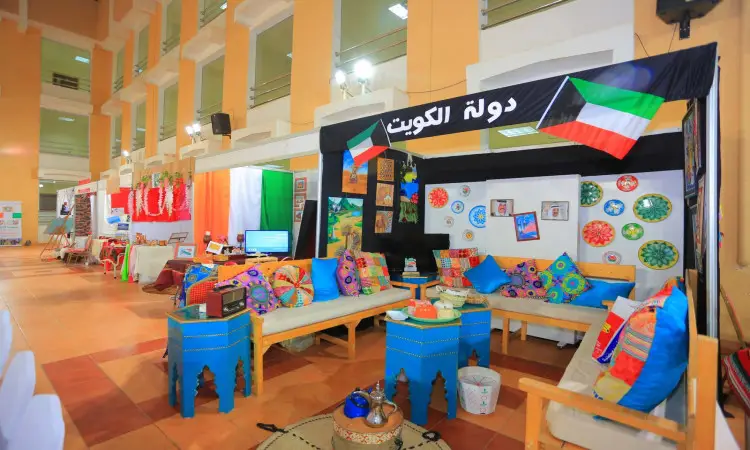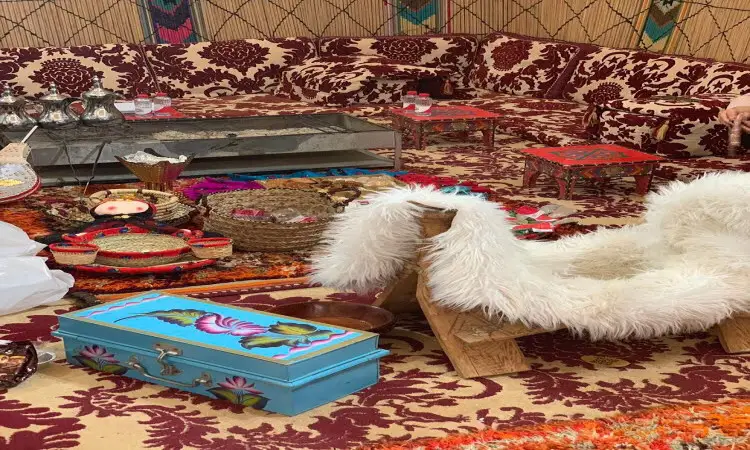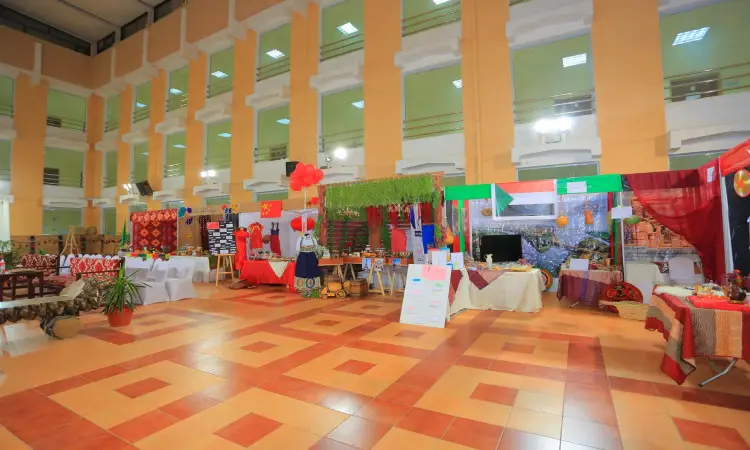The University, represented by the Deanship of Student Affairs, concluded the "Heritage of Peoples" festival for female students on Wednesday, 1/6/1440 A.H., at the College of Shari`ah for Girls in Buraydah, which was held for three days, with the participation of (10) countries represented by scholarship students from 15 different colleges at the university. The festival aimed to enhance the spirit of cultural openness among them and provided an opportunity for scholarship students to introduce the culture of their countries and their popular and traditional identities.
The first day of the festival witnessed a variety of exhibits in the pavilions and corners of the participating countries, namely: (Albania, India, Bangladesh, China, Pakistan, Sudan, Tunisia, Ivory Coast, Palestine, Egypt, Kuwait and the UAE), which included a number of food items specific to each country, in addition to the traditional costumes worn by the participants, as the participants in the Indian corner wore the women's costume called sari, and were adorned with Indian-style jewelry, and the participants in the Chinese corner presented a show in their country's official uniform "hanfu", with the wicker hat that was associated with Chinese farmers, and the corner presented a visual presentation on the ancient Chinese civilization.
Participants in the Sudan corner presented a parade zaffa that mimicked Sudanese wedding traditions, while the Albanian corner featured popular songs inspired by the Balkan Muslim culture, through which it presented a panel introducing the most important historical figures in Albania, such as the Albanian scholar and Khairuddin Barbaros.
The Emirati corner provided some information about the ancient Emirati heritage and pictures of Sheikh Zayed (may God have mercy on him), where the participants wore their famous golden jalabiya and burqa and showed the method of engraving their rugs, distributions decorated with pearl beads, the most famous ancient trade in the Emirates, and the students' visit with drums, the traditional Emirati bride in all its splendor and splendor.
The Egyptian corner presented a popular poem recited by the student in the Egyptian colloquial dialect of the poet Hisham El-Gakh. In Tunisia, the participants reviewed Tunisian hospitality methods and foods such as the Tunisian tagine and the traditional costume known as the caftan, as well as the qaqab, a silver shoe usually worn by brides and considered a symbol of elegance in Tunisian culture, and in the Palestine corner, students wore the Palestinian keffiyeh (white shemagh), which is a symbol of Levantine culture, and then recited a poem about the land of Palestine.
Among the participating countries is France, which is full of civilizations, where students displayed a small number of French products such as perfumes, chocolates, French bread and famous luxury biscuits, and decorated the corner with red roses, statues of France's most famous landmarks, pictures of the capital, Paris, and audio stories in the attractive French language.
The Bangladesh corner featured posters, handicrafts from the country's heritage, traditional clothes, a model of an old Bangladeshi bride, and a number of decorations for Bangladeshi women. The Ivory Coast also participated in the festival to introduce the country, its heritage, traditional foods, and folkloric dance performances.
As for the national corner, it contained a number of popular foods such as kalija, maamoul and Arabic coffee, and the participants wore the popular costume known as shalki and Saudi bakhang, and the corner also included a visual presentation on games in the past such as khatta and taqiyah.





